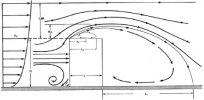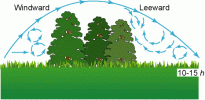That a horizontal wind blowing toward a tree would be transformed into a vertical wind is very dubious.That completely explains some undesirable behavior I observed with my Mini-2 when flying in non-trivial wind. 15- 20 mph. I was experimenting with flying close to a tree, and I observed some uncommanded descents.
Tree induced turbulence! The wind was gusty, but nothing more than the Mini-2 had handled before...out in the open. Drone hit tree, fell through tree, been there, posted the video! I thought that a waving branch may have caught it, which may also be true, but that wouldn't explain the uncommanded descents. This does.
Your uncommanded descent is much more likely to be due to something else.
An examination of tour flight data is likely to find a more credible explanation.













